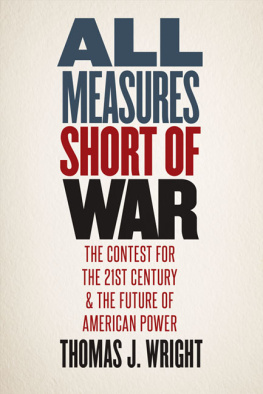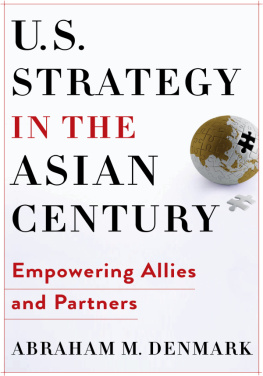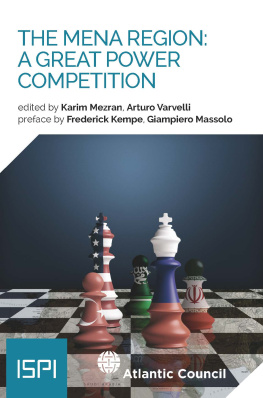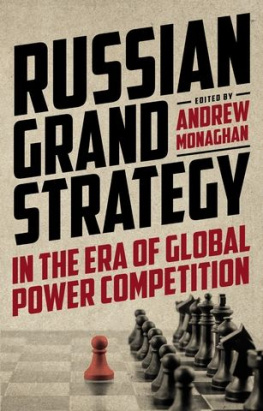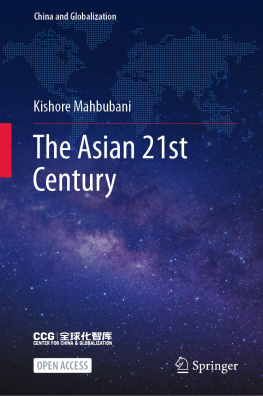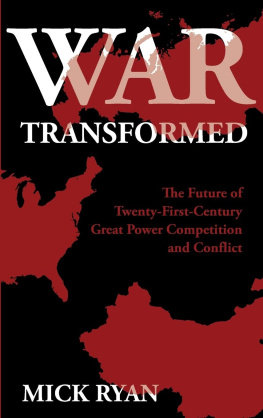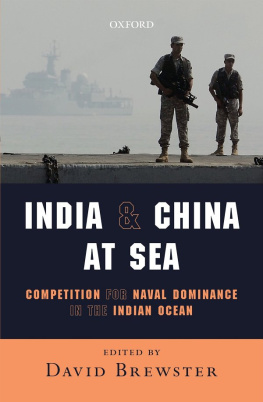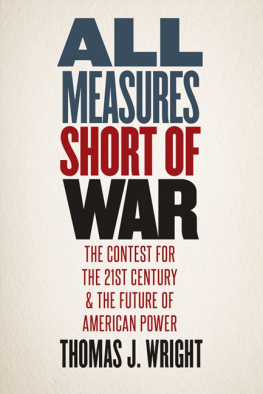ALL MEASURES
SHORT OF WAR

Copyright 2017 by Thomas J. Wright.
All rights reserved.
This book may not be reproduced, in whole or in part, including illustrations, in any form (beyond that copying permitted by Sections 107 and 108 of the U.S. Copyright Law and except by reviewers for the public press), without written permission from the publishers.
Yale University Press books may be purchased in quantity for educational, business, or promotional use. For information, please e-mail sales.press@yale.edu (U.S. office) or sales@yaleup.co.uk (U.K. office).
Set in Meridien and Futura type by IDS Infotech Ltd., Chandigarh, India.
Printed in the United States of America.
Library of Congress Control Number: 2016957906
ISBN 978-0-300-22328-6 (hardcover : alk. paper)
A catalogue record for this book is available from the British Library.
This paper meets the requirements of ANSI/NISO Z39.481992
(Permanence of Paper).
10 9 8 7 6 5 4 3 2 1
To my wife, Karen McMonagle
CONTENTS
PREFACE
This is a book about why the postCold War international order has come to an end and what comes next. I started writing it in the spring of 2014, shortly after Russias invasion and annexation of Crimea. I finished it in December 2016, just after the United States elected Donald Trump as its forty-fifth president, a man who ran against U.S. global leadership on a nationalist platform of America First. These eventsalong with the United Kingdoms vote to leave the European Unionwere nothing short of astonishing. But they did not come out of the blue.
The past five years saw the end of the era of convergence and the advent of a more nationalist and competitive world. In the two decades after the Cold War, all major powers appeared to be converging toward a liberal international order that promoted cooperation and integration. They all prospered in a globalized economy and shared the same challengesterrorism, climate change, rogue states, and economic volatilityeven if they disagreed from time to time on how to tackle them. Non-Western powers like Russia and China were never going to transform into liberal democracies overnight, but they appeared poised to become responsible stakeholders in this liberal order. Geopolitical differences over territory and ideology never disappeared completely, but they seemed to fade into insignificance. Successive American presidents based their national security policies on this pursuit of convergence.
In recent years, instead of convergence we had divergence. Authoritarian leaders in Russia and China worried that the liberal order would undermine their hold on power, and they coveted spheres of influence in their regions. They tolerated the liberal order when they were relatively weak, but as they became more powerful, they acted on those beliefs. Both pursued revisionist strategies to upend the status quo in their regions, albeit by different means. Meanwhile, the Western model of liberal order took a number of punishing blows, particularly with the financial crisis of 2008. Economic integrationwhether with the euro, immigration, trade, or financewas increasingly perceived as a threat to the well-being of Western nations. The political establishment struggled to respond, and populists began their ascent.
By 2016, the world had become much more nationalist and geopolitically competitive. The United States and Russia were locked in an economic war over Ukraine and in a tense standoff in Syria. China was building islands in the South China Sea in an effort to turn it into a Chinese lake. There were doubts over American resolve as the Obama administration sought to reduce its engagement in the Middle East and pulled its punches in Europe and East Asia, sometimes to secure Moscows and Beijings cooperation on global issues.
Trumps election will sharply accelerate the trend. For seventy years the United States built and led a liberal international order characterized by alliances, an open economy, multilateral cooperation, democracy, and human rights. Trump has explicitly rejected this strategy. For Trump, the United States should define its interests very narrowly and set aside any concept of the common good. The liberal order has always rested on American power and a willingness to uphold it. Without such power and leadership, it is fragile and vulnerable.
History suggests that instability is at its greatest in the early phases of a new paradigm, especially one involving strategic competition. For example, the early period of the Cold War was prone to crisis, which only abated and became more predictable after the Cuban Missile Crisis of 1962. The reason is clear: at the beginning, no one is quite sure where the red lines are. The protagonists probe and test each other and often overstep the mark. They are, in effect, in a learning process. Later on, clarity descends. They have a better sense of each others core interests and strategic limits, and they can adapt to a new equilibrium and peaceful, albeit tense, coexistence. As the postCold War order comes to an end, ambiguity reigns and instability beckons.
This books title, All Measures Short of War, is taken from President Franklin Delano Roosevelts policy in 19391941 to do everything to help the Allies short of declaring war on Germany. Measures Short of War is also the title of an influential lecture given by George F. Kennan, the author of the doctrine of containment, at the National War College in September 1946 about how the United States and the Soviet Union would try to pressure each other. Now, in the coming era, all of the great powers want to avoid a major war with each other. But they will compete fiercely to gain an upper hand in ways short of a major war. They will engage in coercive diplomacy and military build-ups. They may use force against smaller countries and engage in limited proxy wars with each other. They will exploit each others vulnerabilities in an interdependent worldeconomically, technologically, and politically. They may even form temporary tactical alliances with rivals to accomplish their short-term objectives.
None of this is to say that a major war is impossible. It could occur inadvertently, through miscalculation or a dramatic change in intentions. Diplomacy will be needed to keep the peace. Indeed, when Roosevelt pursued an all measures short of war strategy, war did break out. But the most likely outcome is a prolonged period of high-stakes peacetime competition with all of the old red lines blurred if not erased. This competition will mainly take place in the three regions of greatest strategic importanceEurope, East Asia, and the Middle East. There will be a strong ideological component that pits liberal democracy against authoritarianism.
One of the most important features of this new era of nationalism and competition is that it occurs against a backdrop of unprecedented globalization. The major powers are closely linked with each other economically and technologically. It is widely believed that interdependence promotes cooperation, but in the coming decade it is more likely to be perceived as a source of vulnerability and strategic competition, whether it involves sanctions, cyberwarfare, or other means of coercion. We already saw this play out in Western sanctions on Russia and in Russias extraordinary interference in the 2016 U.S. election. This weaponization of interdependence is just a glimpse of what is to come. Norms may emerge, but only after a struggle, with actions taken by all sides, in which an equilibrium is formed and adjusted in accordance with the realities of the balance of power.
The United States is ill prepared for a nationalist and geopolitically competitive world. Those who support the liberal order, like President Barack Obama, have been slow to understand the challenges to it from revisionist states, a collapsing Middle East, and rising populism. Those who embrace the shift, like President Trump, seem unaware of the long-term consequences of a more chaotic world. But Americans cannot afford strategic drift.
Next page
